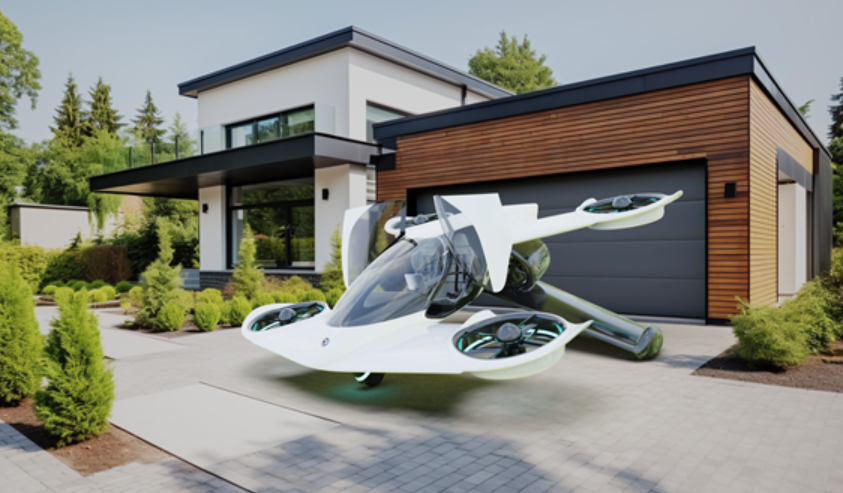
Developed by Doroni Aerospace, the H1-X aims to redefine urban transportation by offering a compact, user-friendly solution for short-distance travel.
Featuring an innovative ducted fan propulsion system and a sleek, automotive-inspired design, the H1-X prioritizes safety, efficiency, and ease of operation. With semi-autonomous capabilities and a projected top speed of 140 mph, it represents a significant step toward mainstream eVTOL adoption.
H1-X eVTOL Design
The Doroni H1-X features a streamlined, futuristic design optimized for urban and suburban environments. The aircraft incorporates a fully enclosed ducted fan system, which enhances safety by reducing exposure to spinning rotors and minimizing noise pollution. The vehicle’s structure is lightweight yet robust, utilizing advanced composite materials to balance strength and efficiency.
The H1-X is a compact eVTOL designed to fit within a standard two-car garage, making it a viable option for personal use. The interior offers an ergonomic, automotive-inspired cockpit with intuitive controls, enabling ease of use for both trained pilots and potential future operators under simplified flight regulations.
Features of the H1-X eVTOL
- Ducted Fan Propulsion: The aircraft utilizes a proprietary ducted fan system, enhancing efficiency, safety, and noise reduction.
- Semi-Autonomous Flight: The H1-X is designed with advanced flight control systems that allow for semi-autonomous operation, reducing the complexity of piloting.
- Compact Design: Its size allows for easy storage in residential garages, making it suitable for personal urban air mobility.
- Enhanced Safety Features: Redundant flight control systems, emergency landing protocols, and built-in safety measures contribute to a secure flying experience.
- User-Friendly Interface: The cockpit is designed for intuitive operation, minimizing the learning curve for pilots transitioning from traditional aviation or ground vehicles.
H1-X eVTOL Capabilities
The H1-X is tailored for personal and recreational use, providing an alternative to road-based transportation in congested urban areas. While primarily designed for private owners, it could also serve applications such as air taxi services or emergency response in the future. Its semi-autonomous capabilities and intuitive controls suggest a vision for broader accessibility once regulatory frameworks evolve.





